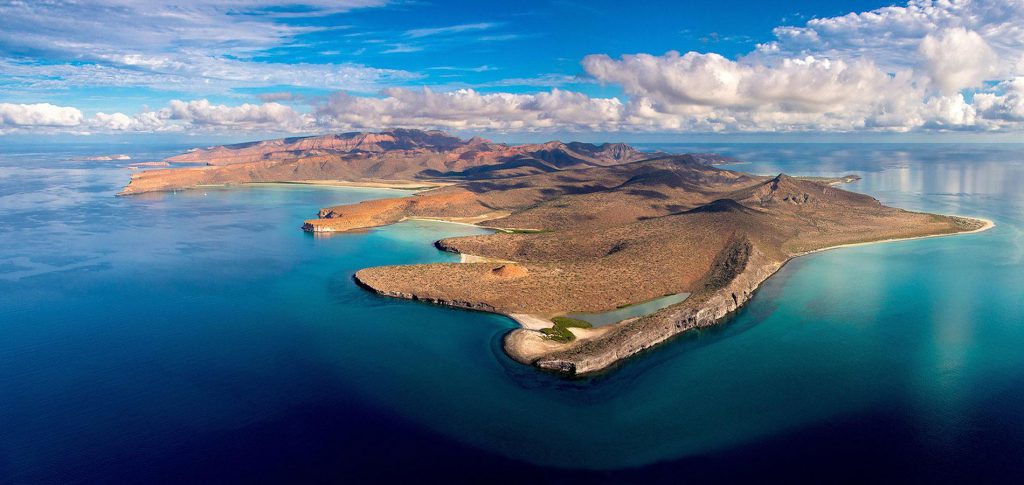Content
- 1 Introduction to the Archipelago of Espiritu Santo National Park
- 2 The Biological Diversity of the Archipelago
- 3 Recreational and Touristic Activities
- 4 Cultural Heritage
- 5 The Park in Sustainability and Conservation
- 6 Planning Your Visit
- 7 Threats and Challenges of the Archipelago of Espiritu Santo National Park
- 8 Photo Gallery
Imagine a natural paradise that offers you an unforgettable experience, surrounded by crystal-clear waters, endemic wildlife, and unparalleled cultural heritage. The Archipelago of Espiritu Santo National Park (in Spanish: Parque Nacional Archipiélago de Espíritu Santo) located in the Mexican Sea of Cortez, provides you with all of this and much more. In this guide, we will explore every corner of this spectacular Mexican destination.
Introduction to the Archipelago of Espiritu Santo National Park
Brief History and Park Establishment
Declared a National Park on May 10, 2007, the Archipelago of Espiritu Santo encompasses 48,654.83 protected hectares and has been a sanctuary of biodiversity for centuries. The protection of its ecosystem has been a priority for Mexican authorities, ensuring the preservation of its rich wildlife.
Geographical Location
Situated in the Gulf of California, also known as the Sea of Cortez, this park is a group of islands located a short distance from the city of La Paz in Baja California Sur, Mexico. It belongs to the municipality Fronting the coasts of La Paz, in the region of the Baja California Peninsula and Northern Pacific, with its geographical coordinates: 24°28′17″ N, 110°19′57″ W.
The Biological Diversity of the Archipelago
The Archipelago of Espiritu Santo National Park is a refuge for a variety of life that will astonish you. Amidst colorful corals and turquoise waters, you will encounter a truly unique marine and terrestrial life. The archipelago’s islands are home to over 200 species of vascular plants and more than 70 species of fauna, including amphibians, reptiles, birds, and mammals, among them the California sea lion.
Endemic Fauna
It harbors a great variety of species, many of which are endemic, such as the black hare and several species of reptiles. You can also enjoy the sight of sea lions sunbathing on the rocks. There are more than 70 species of insular fauna.
Specific Flora of the Region
The archipelago is a treasure trove of unique plants and flowers, many of which are found nowhere else in the world. There are 53 registered species of endemic plants in the region.
Recreational and Touristic Activities
Whether you are inclined towards adventure or prefer tranquility, the Archipelago of Espiritu Santo National Park offers activities for all tastes.
Snorkeling and Diving
The crystal-clear waters and marine diversity make the park a perfect spot for snorkeling and diving.
Kayaking
Kayaking is a popular way to explore the park’s coastlines, allowing for a close view of marine fauna.
Bird Watching
The park is home to numerous bird species, making it an ideal location for bird watching.
Camping and Hiking
With various hiking trails and camping areas, nature enthusiasts have the opportunity to fully immerse themselves in this natural environment.
Cultural Heritage
The Archipelago of Espiritu Santo National Park is more than just nature. It also boasts a rich cultural heritage that adds depth and meaning to its beauty.
Influence of Indigenous Groups
The influence of the indigenous groups that inhabited the area is reflected in the local culture and traditions.
Cave Paintings and Archaeological Sites
Discover fascinating cave paintings and archaeological sites that narrate the history of ancient civilizations that inhabited these islands.
The Park in Sustainability and Conservation
The Archipelago of Espiritu Santo National Park plays a key role in marine ecosystem conservation and the promotion of sustainability.
Active Conservation Projects
Since its establishment, the park has implemented various conservation projects to protect its unique biodiversity.
Impact of Tourism on the Local Ecosystem
It is essential for visitors to respect the park’s regulations to minimize the impact on the local ecosystem.
Planning Your Visit
To fully enjoy your visit to the Archipelago of Espiritu Santo National Park, it’s important to consider some planning details.
Best Time to Visit
Depending on your interests, certain times of the year may be more appealing for visiting the park than others.
How to Get There
We provide you with the necessary information to reach the park, whether by car, boat, or public transportation.
Available Guides and Tours
There is a wide range of guides and tours that can enhance your experience and ensure you don’t miss any details of the park.
Regulations and Visitor Tips
It’s essential to familiarize yourself with the park’s regulations and follow some tips to ensure a safe and enjoyable visit.
Threats and Challenges of the Archipelago of Espiritu Santo National Park
Despite its beauty and natural wealth, the Archipelago of Espiritu Santo National Park faces several threats and challenges.
Climate Change and Its Effects
Climate change is a significant threat to the park and its ecosystem. Rising temperatures and changing climate patterns are causing coral bleaching, shifts in species distribution, and sea level rise, leading to coastal erosion and loss of terrestrial habitats. The park is implementing adaptation and mitigation measures, but awareness and actions are needed to address this challenge.
Other Environmental Challenges
In addition to climate change, the Archipelago of Espiritu Santo also faces other environmental challenges. One of them is pollution, both terrestrial and marine, which can have harmful effects on marine life and coastal ecosystems. Unsustainable fishing is another challenge, as it can negatively impact fish populations and other marine organisms, along with the introduction of invasive species, which also poses a threat to the park’s native biodiversity. They can compete with native species and disrupt ecological balances. These challenges require active management and conservation measures to protect the park’s integrity and ecosystem.
